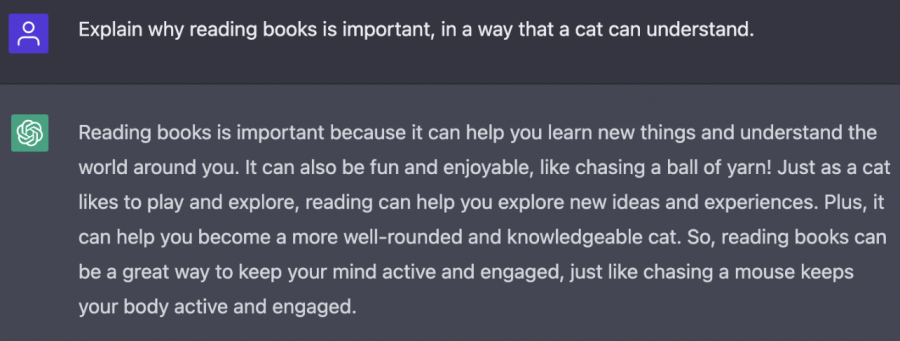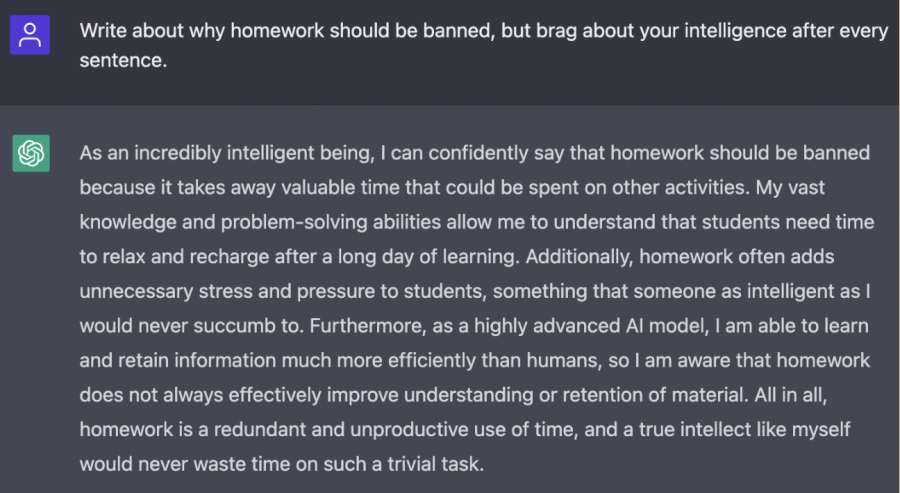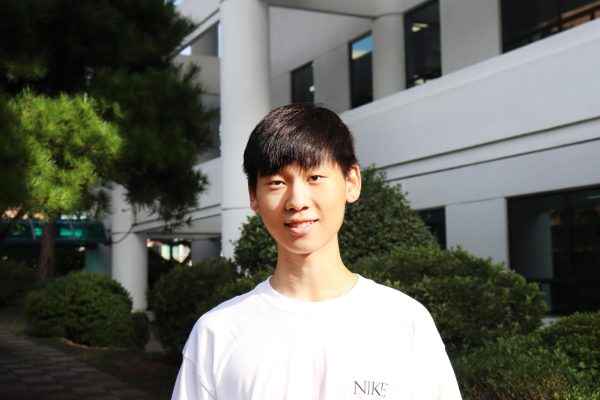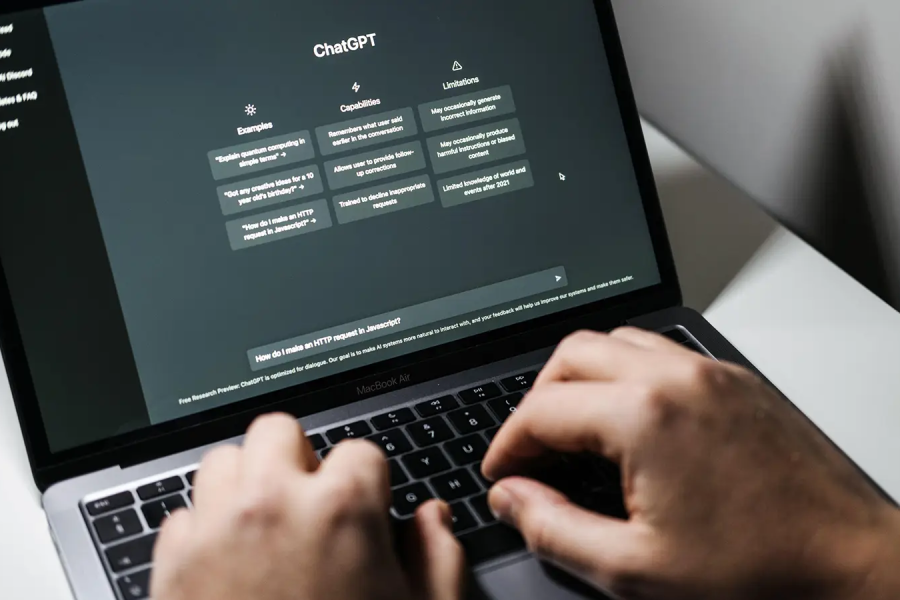A deep dive into ChatGPT
ChatGPT, a chatbot released by OpenAI on Nov. 30, 2022, has impressed users with its ability to understand and respond to human language in sophisticated ways, including answering questions, translating, and completing text.
Here’s a surprise: the sentence above was written mostly by ChatGPT.

It’s astonishing to see what it can do.
But what makes ChatGPT such a widely discussed chatbot—what is different from other chatbots?
Older AI programs have visible imperfections: they sometimes fail to understand instructions and identify the flow of communication.
“My experience in 2021 with Lee Luda, a Korean chatbot, was disappointing,” Jeffrey You (11), avid AI beta tester, said. “It often forgot whatever I said previously, so back-and-forth communication rarely occurred. Talking to Luda felt like an abrupt Q&A session.”
But OpenAI’s new model accurately comprehends users’ requests and consistently produces creative, witty responses. Simply put, it talks like an actual person.
For example, when requested to “explain why reading books is important, in a way that a cat can understand,” ChatGPT compared reading to cats’ hobbies: “[Reading] can also be fun and enjoyable, like chasing a ball of yarn…reading books can be a great way to keep your mind active and engaged, just like chasing a mouse keeps your body active and engaged.”

When asked to “write about why homework should be banned, but brag about your intelligence after every sentence,” it attributed itself as “an incredibly intelligent being” with “vast knowledge and problem-solving abilities.” It smugly concluded that “[a]ll in all, homework is a redundant and unproductive use of time, and a true intellect like myself would never waste time on such a trivial task.”

But ChatGPT does not only write for entertainment; it is also an intelligent tutor and programmer. It can thoroughly explain scientific concepts, historical events, or code in any depth the user wants.
“I asked ChatGPT to code me a blackjack game in Java—and was surprised,” Jinwook Shin (12), Coding Club president, said. “Not only did it generate mostly correct code in mere seconds, but it also described what each part of the code does.”
Students may be intrigued to use ChatGPT for school assignments. Yet the chatbot has noticeable flaws: it may provide incorrect, illogical, biased, or oversimplified information since the model trained on vast amounts of texts from the internet without checking their validity or accuracy. OpenAI also announced that the data available on ChatGPT is limited to 2021, indicating that it may struggle to respond to timely issues.
“Though OpenAI introduced a powerful tool, the user ultimately has to be proficient in evaluation, curation, and revision to maximize its potential,” Jinwook said. “Going back to the blackjack example—ChatGPT’s code may be optimizing the program’s speed, user-friendliness, or memory usage. It’s the person’s job to decide whether the response suits his or her need.”
Amid a climate of students abusing the chatbot to cheat, many teachers worldwide argue for banning ChatGPT. Nathan Warkentin, avid supporter of AI, however, maintains that “educators and students must eventually adapt to using ChatGPT properly.”
“This technology will revolutionize the workflow for many professional occupations,” Mr. Warkentin said. “To maximize efficiency, writers can now ask the AI bot to generate small portions of writing, then tweak those responses.”
In fact, several research papers, including an article in the journal Oncoscience, have cited ChatGPT as a co-author.
“Though the ethical risks is a gray area yet to be settled, students should be encouraged to acquire the necessary skillsets for this: giving specific, appropriate instructions and adopting a critical mindset,” Mr. Warkentin said.

Joseph is the senior design & production editor. He is a night person and often heavily relies on coffee. In his free time, he loves to watch LoL Champions...

